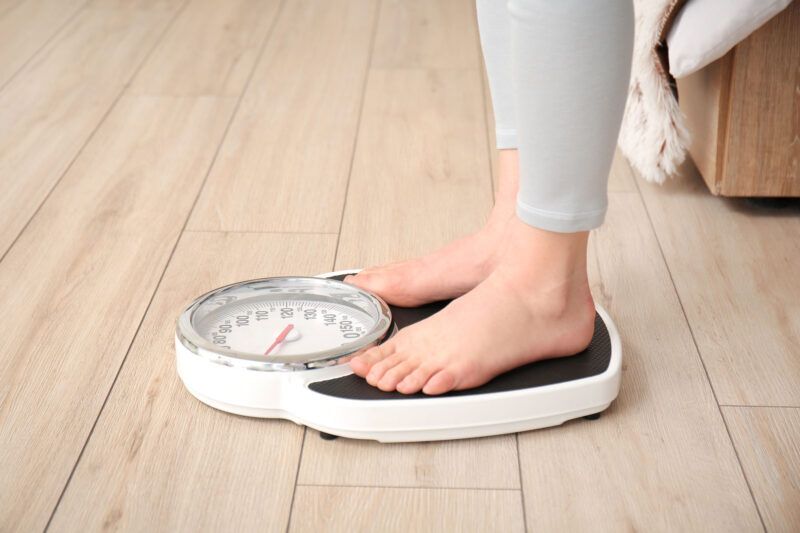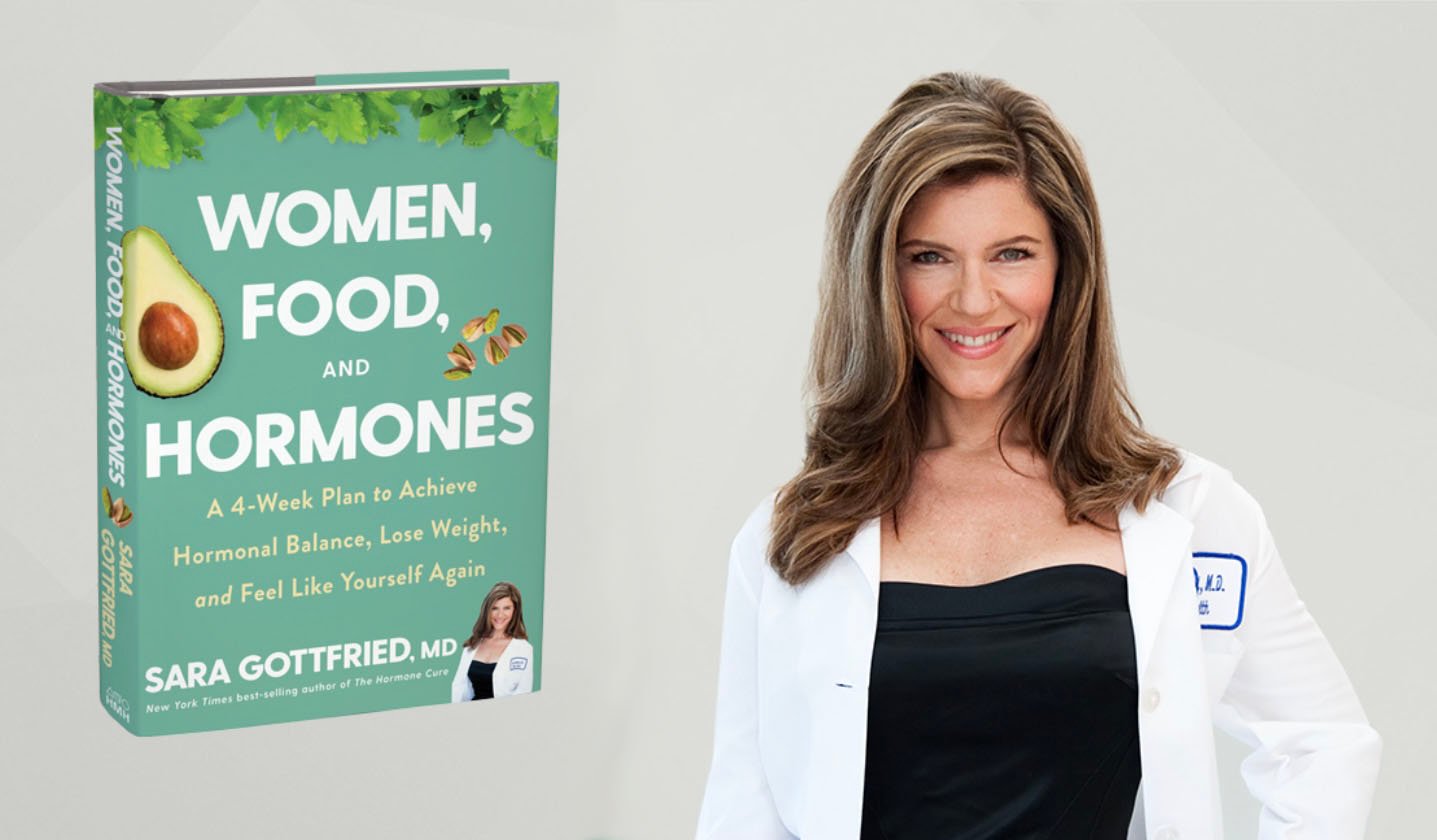Women often encounter difficulty losing weight. To make matters worse, it often seems their male partners, brothers, and friends can change their diet or lifestyle, and the pounds fall off. Meanwhile, many women who make identical changes are still waiting for results. Research shows that this phenomenon isn’t in our heads—in a systematic review of 58 studies that directly compared diet-only and diet-exercise interventions in women versus men, 10 of the studies found that men lost more weight than women on both types of weight-loss interventions.
A lot of this comes down to crucial metabolic differences between men and women. Our body composition, hormones, pregnancy, and more can all complicate weight loss and weight management.
The Metabolic Differences Between Women and Men
Research has identified a few factors that account for why women’s bodies tend to accumulate body fat and struggle to lose weight, including:
Fundamental differences in body composition: On average, women are smaller than men and have more body fat and less muscle mass. This size difference is why, on average, women have a lower basal metabolic rate, a measurement of the number of calories the body burns as it performs life-sustaining functions like breathing and pumping blood. Some research shows that 24-hour energy expenditure is 5 to 10 percent lower in women compared to men, regardless of physical activity.
Higher rates of diseases connected to weight gain: Women also have higher rates of thyroid disease, which can affect weight. For example, women are five to eight times more likely than men to have thyroid problems such as hypothyroidism, a condition that causes metabolism to slow and is associated with fatigue and weight gain. Other conditions, such as polycystic ovarian syndrome (PCOS)—which affects up to 12 percent of women in the U.S. of reproductive age—are intricately connected to obesity and insulin resistance. Around four in five people with PCOS are obese, and studies have confirmed that PCOS hampers weight loss. Researchers suspect that PCOS’s effect on mental health and changes in energy expenditure influence weight loss.
Stronger cravings and appetite: Research suggests that the neurobiological mechanisms behind cravings and appetite differ in men and women. For example, a 2009 study published in Proceedings of the National Academy of Sciences found that when men and women smelled and tasted food like pizza and cake, brain scans showed significant activity in regions that control the drive to eat. But when asked to suppress their feelings of hunger and cravings, only men showed a relative decrease in activity in the food-activated brain regions.
Pregnancy puts some women a step behind: About half of pregnant women gain excessive weight during pregnancy or keep those extra pounds for at least a year after giving birth. In fact, the hormone prolactin, which rises during pregnancy and during breastfeeding, is known to influence systems that regulate appetite and is known to promote weight gain, obesity, and metabolic syndrome because of its effect on behavioral pathways in the gut and brain. Studies also show that weight gain during pregnancy is an independent predictor of the long-term weight gain and obesity in women. Among women who had excessive weight gain during pregnancy, there was an increased likelihood of being overweight or obese 21 years later.
Related article:
The Role of Sex Hormones and Weight
In one way or another, all of the metabolic differences highlighted above can be traced back to the same thing: hormones, says Dr. Sara Gottfried, Levels advisor and author of Women, Food, and Hormones. For example, in women, sex hormones like estrogen and progesterone play an outsize role in body composition, and hormones are what drive hunger levels and cravings.
How this works: “Big picture, I like to use a symphony analogy for hormones—the official conductor of the orchestra is your brain,” says Dr. Gottfried. Two especially key parts of the brain here are the hypothalamus and the pituitary gland. These parts of the brain communicate with organs (like the ovaries in women, testes in men, and the thyroid gland) to produce hormones. When these brain regions are functioning normally, common weight-loss strategies, such as increasing physical activity and decreasing caloric intake, tend to work, Dr. Gottfried says.
But poor eating, too much drinking, and excess stress can all impair the hypothalamus and pituitary gland, in turn disrupting the hormonal balance. “Your hormones may individually work against weight loss, and they might also work together in a way that makes weight loss even harder,” Dr. Gottfried says.
Take estrogen, for example. Estrogen is the main female sex hormone. It’s responsible for female sexual and reproductive development. It’s also intricately involved in weight and body composition, though its specific effects are complex and vary depending on life stage. One study exploring the link between estrogen and insulin found that having estrogen levels that are too high or too low may lead to rapid changes in whole body metabolism, including fat distribution, insulin sensitivity, energy expenditure, and food intake.
“Estrogen dominance [being high estrogen in relation to progesterone] leads to weight gain around the waist, hips, and butt, and promotes insulin resistance,” Dr. Gottfried says. “In my clinical experience, too much estrogen is the main reason why women have a harder time losing weight regardless of age.” Estrogen dominance has been linked to conditions like PCOS, insulin resistance, and endometriosis.
That said, too little estrogen in relation to progesterone can also be problematic for metabolism. “Declining estrogen levels can also lead to weight gain, usually around the middle, and lean body mass declines,” Dr. Gottfried says. This is what typically happens during the menopausal transition. Why? Sex hormones like estrogen and, more specifically, estrogen receptors play a major role in the activity of fat cells and fat distribution. Research shows that women gain an average of 12 pounds within eight years of the onset of menopause.
Women’s hormones also change drastically throughout a woman’s menstrual cycle, and this can cause fluctuations in weight. One study showed that women burn an average of 106 calories fewer per day during the follicular phase (before ovulation) versus the luteal phase (after ovulation), regardless of physical activity. Other research shows that the body’s insulin response changes throughout a menstrual cycle. For example, insulin sensitivity is higher in the follicular phase and decreases in the luteal phase.
Furthermore, studies show that premenstrual food cravings are a widespread problem and may contribute significantly to the cardiometabolic adverse effects, such as high blood sugar and visceral fat accumulation, associated with obesity.
How to Support Hormones and Weight Management
There are ways to help your body stay in hormonal balance, which will make it easier to lose weight and maintain weight loss, Dr. Gottfried says. Here are some good places to start.
1. Prioritize resistance training
Women are at a natural disadvantage when it comes to calories burned throughout the day, but certain types of exercise—mainly resistance training—can increase basal metabolic rate. A systematic review of more than 18 peer-reviewed articles comparing the effects of cardiovascular exercise to resistance training showed that while there’s no effect of aerobic exercise on resting metabolic rate, resistance exercise increased resting metabolic rate on average compared to controls.
2. Focus on healthy protein
Dr. Gottfried recommends shifting your nutrition plan starting during perimenopause and continuing into menopause. “You may need to reduce calories and increase certain macronutrients, like protein,” she says. Dr. Gottfried recommends a minimum of 0.75 to 1 gram of protein per pound of lean body weight. That means, for example, that a woman weighing 130 pounds, with 100 pounds of lean body mass, should eat about 75 to 100 grams of protein each day. “More protein may be needed depending on many factors including how much you exercise and if you’ve had any loss of muscle mass. As I’ve aged and started lifting heavier, I’ve needed more protein, ideally 150 grams per day.” Dr. Gottfried says. She suggests the following sources of protein, in order of preference:
- Nuts (macadamia nuts, walnuts)
- Seeds (pumpkin, flax, hemp)
- Eggs (from cage-free chickens)
- Low-heavy-metal, wild-caught fish (salmon, mackerel, sardines, trout)
- Shellfish (crab, mussels, oysters, scallops, shrimp)
- Free-range poultry (preferably skin-on dark meat)
- Free-range, grass-fed organ meats
- Grass-fed beef and wild game (maximum of twice per week)
- Antibiotic- and hormone-free pork chops, pork ribs, and pork rinds (maximum of twice per week)
3. Avoid hormone-disrupting foods
Research shows that eating a lot of trans fats, refined carbs, and added sugars can harm fertility and female hormone balance, decreasing progesterone and anti-Müllerian hormone, a hormone that regulates follicle development and parts of ovulation. Alcohol is another known hormone disruptor. Studies in pre- and post-menopausal women have shown a general correlation between hot flashes and alcohol use. And a study showed 18 percent higher mean salivary estradiol levels throughout the menstrual cycle in women who consumed more than 10 grams of alcohol per day compared to women who consumed less than 10 grams of alcohol per day. (For reference, 12 ounces of beer, five ounces of wine, and 1.5 ounces of distilled spirits all contain 14 grams of alcohol.) To promote hormone balance, limit the consumption of alcohol as well as drinks and foods with added sugars and processed carbs, such as sodas, juices, and most packaged foods.
4. Manage stress
There’s a clear connection between stress and weight gain. In a randomized controlled trial, participants who added mindfulness-based stress management to their eight-week weight-loss program significantly reduced BMI (-3.1) compared to the control group (-1.7), even though they were only instructed to perform the techniques once a week. The program included diaphragmatic breathing, progressive muscle relaxation, and guided visualization. There isn’t a magic number for how often to do these practices or for how long, but one frequently cited study showed positive changes in emotional regulation and mood with just 13 minutes of meditation a day for eight weeks.
5. Consult a physician
The interplay of different hormones and metabolic health is highly complicated, and if you’re struggling to lose weight, it may be worth consulting a physician trained in integrative and functional medicine. These doctors look at the whole person. For example, Dr. Gottfried’s approach starts with a look at metabolic health, gut health, hormone levels, and personal history, and the interventions include nutrition, supplements, exercise, stress management, movement, and botanicals. You can find a physician through directories, such as one through the University of Arizona or the Institute of Functional Medicine.
 Manage your weight the healthy way with Levels
Manage your weight the healthy way with Levels
The best way to understand how your diet and behavior affect your metabolic health—and your weight—is with a continuous glucose monitor and an app like Levels to help you understand your data. Levels members get access to the most advanced CGMs and personalized guidance to build healthy, sustainable habits. Click here to learn more about Levels.










